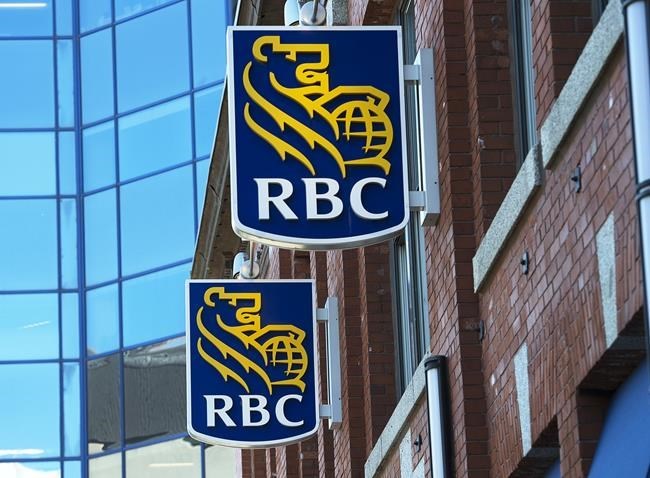TORONTO — Royal Bank of Canada outlined Wednesday its climate ambitions for key sectors this decade with targets for lower financed emissions that critics say fall far short of what's needed.
The targets are the first hard numbers in terms of how far and fast the bank, which has been targeted for its funding of fossil fuel production, aims to reduce emissions by 2030 on its way to meeting its net-zero commitment by 2050.Â
In the oil and gas sector, the bank wants to reduce financed emissions from oil and gas production by 35 per cent and from the consumption side of oil and gas, such as emissions produced by driving a car, by between 11 and 27 per cent. Both targets are based on an intensity basis, meaning emissions per barrel of oil for example, rather than an overall reduction in emissions.Â
In power generation, it wants to reduce direct emissions by 54 per cent, while for the automotive manufacturing sector it has set a target of 47 per cent, both also intensity targets.
RBC said the targets are "aspirational" and will depend on policies and actions beyond its own efforts with clients.
"Businesses, governments, and individuals working together on the fundamental reshaping of our economies and societies will be critical in achieving these goals," chief executive Dave McKay said in a statement.
McKay also said the bank is committed to helping build a cleaner future, but critics said the targets and the bank's overall actions show otherwise.
"It's more greenwashing, more hypocrisy and more passing of the buck," said Richard Brooks, climate finance program director for Stand.earth.
Brooks said the bank's use of intensity targets is disappointing as it means overall emissions can still rise.
"What we don't need is more efficiency around how we pollute, what we need to see is a reduction in the amount of pollution going into the atmosphere."
Most of Canada's other Big Five banks also used intensity-based measures when they set targets of between 27 and 35 per cent emissions reductions the oil and gas sector, with the exception of BMO which has set a goal of a 24 per cent reduction by 2030 on the consumption side.Â
RBC's targets come on the same day that a report out by the U.N. warned that climate plans globally are falling far short of what's needed to meet the goals of the Paris Agreement.Â
The bank also outlined on Wednesday details on what will qualify for the $500 billion in sustainable funding it has committed to provide by 2025 as part of its funding of the climate transition.
Critics, however, have kept focus on how much funding the bank continues to provide to the oil and gas industry without any conditions for emission reductions.Â
In a statement Wednesday, Indigenous leaders including Wet’suwet’en Hereditary Chief Woos and Kukpi7 Judy Wilson, secretary-treasurer of the Union of British Columbia Indian Chiefs, criticized both the bank's climate record and its funding of the Coastal GasLink Pipeline.Â
Jennifer Roberge, an organizer with For Our Kids Montreal, who's also a complainant in an investigation launched by the Competition Bureau on potential greenwashing by RBC, said in the same statement that the bank is pouring money into oil and gas projects instead of living up to its claims to support a greener future.Â
RBC has long maintained the need for an orderly transition to a net-zero world that also manages energy security.
This report by The Canadian Press was first published Oct. 26, 2022.
Companies in this story: (TSX:RY)
Ian Bickis, The Canadian Press



